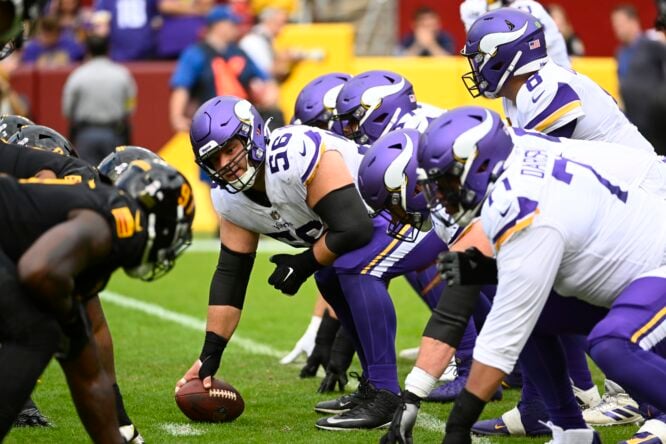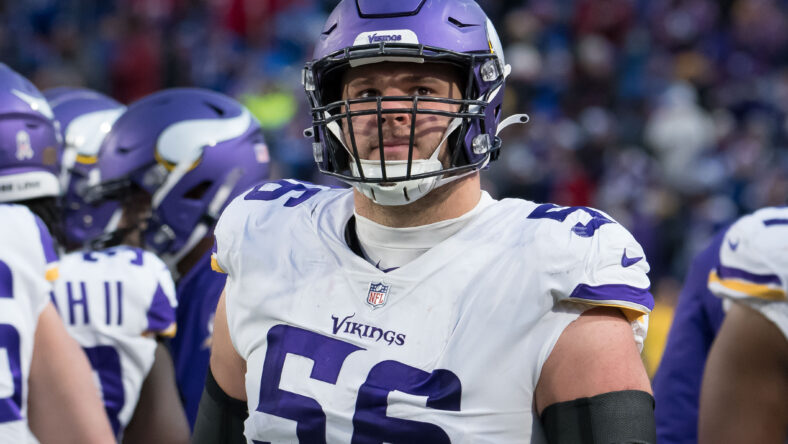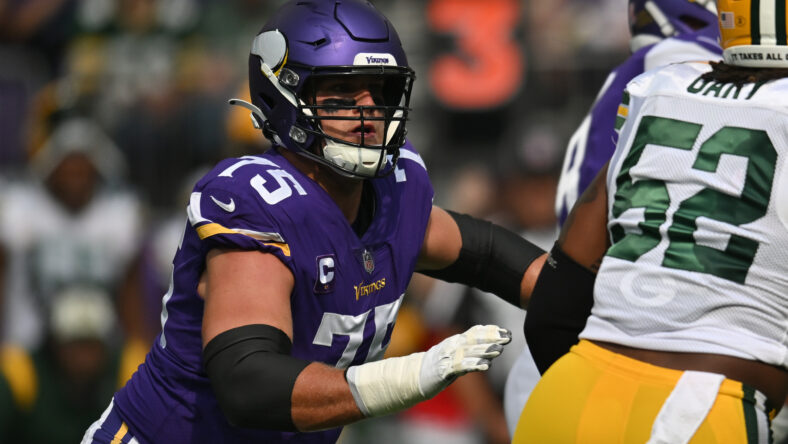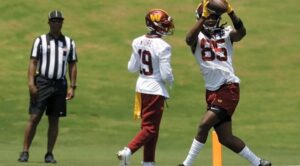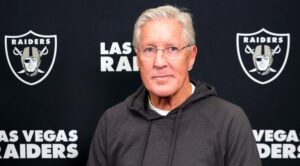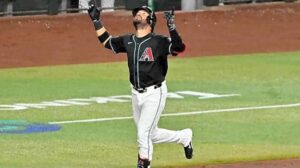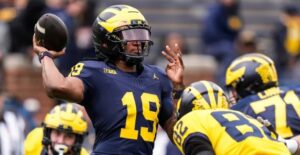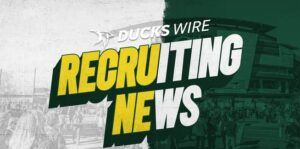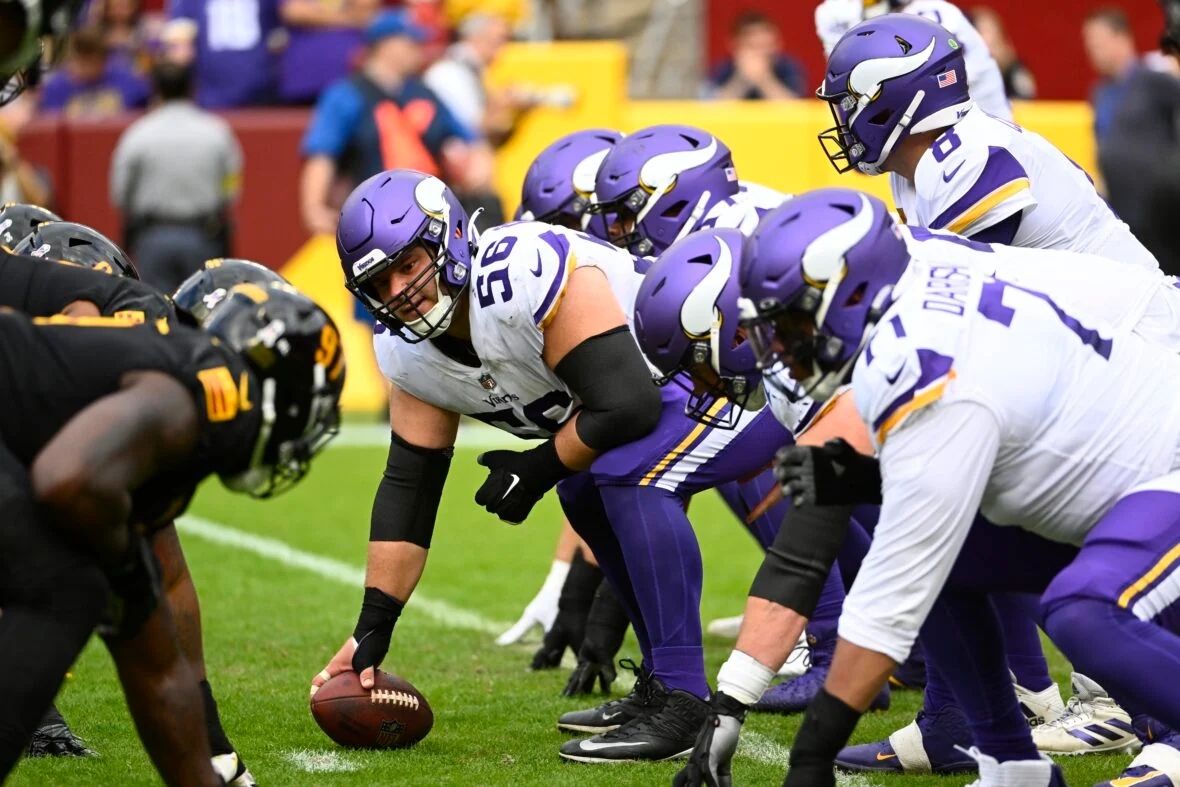
Despite investing significant early-round draft picks and having talented players, the Minnesota Vikings’ offensive line has remained a source of frustration for many years. The interior positions, in particular, have often been identified as problematic areas. Despite facing challenges such as rotating through four different starting quarterbacks in 2023, the offensive line managed a reasonable performance. However, there is still considerable room for improvement. As the team approaches free agency in March, the decisions regarding their offensive line will be pivotal for the Vikings, as they aim to address the persistent weaknesses and enhance overall effectiveness.
As the Minnesota Vikings gear up for the 2024 season, they face a notable decision regarding the left guard position, with Dalton Risner not slated to return. This leaves the team in need of determining who will fill this role. Additionally, pending free agency status for David Quessenberry, Chris Reed, Oli Udoh, Austin Schlottmann, Hakeem Adeniji, and Blake Brandel adds further complexity, necessitating decisions across all backup positions.
Despite four returning starters, the Vikings must also assess the future of these players, either immediately or in the near future. To bolster the offensive line, the team can explore various avenues. Initially, they can evaluate the incumbent players and their performance, determining if adjustments are needed within the current lineup. Subsequently, addressing pending free agents becomes crucial, weighing the value of re-signing key backups against seeking alternatives in free agency.
Furthermore, exploring available free agents offers another avenue for potential upgrades, allowing the Vikings to target individuals who can strengthen the offensive line. Lastly, the upcoming draft presents an opportunity to secure promising prospects who can contribute to the team’s long-term success.
Navigating these decisions is essential for the Vikings, especially amid other pressing issues, such as quarterback uncertainty and defensive concerns. By strategically addressing the offensive line, Minnesota can mitigate potential weaknesses and fortify a critical aspect of their team structure.
Garrett Bradbury has consistently performed well, except when facing larger and more formidable interior pass rushers, where his size limitations become apparent. Despite signing a 3-year, $15.75 million deal last year, releasing Bradbury could save the Vikings a couple of million dollars. However, given the numerous areas of concern across the roster, it’s unlikely that the team will pursue this option.
In free agency, available options like Andre James, Connor Williams, and Aaron Brewer don’t present a significant upgrade over Bradbury, leading the Vikings to potentially invest in these players without guaranteeing substantial improvement.
Another approach could involve targeting mid-round draft picks to initially serve as backups to Bradbury with the potential to develop into starters, potentially replacing Austin Schlottman. The prospect of saving $3.6 million against the salary cap in 2025 by grooming a successor could make this strategy appealing. However, top-ranked centers may be out of reach for Minnesota given their higher priorities. Players like Jackson Powers-Johnson or Zach Frazier may not be viable options for the Vikings in April. Instead, prospects such as Sedrick Van Pran, Beaux Limmer, and Drake Nugent could be worth monitoring.
Dalton Risner emerged as a valuable addition for the Vikings after the team secured a mid-season deal with the free agent. Despite the successful stint, Risner’s potential return comes with a higher price tag following his impressive performance, presenting a financial challenge for the Vikings. Meanwhile, Ed Ingram displayed notable improvement in pass protection during his second year, likely earning him another opportunity to continue his development. However, for Ingram to surpass his current level, he must demonstrate significant progress.
In the event that the Vikings are unable to reach an agreement with Risner or deem Ingram’s progress insufficient, they have several avenues to explore, starting with free agency. While players like Robert Hunt or Kevin Dotson could command significant contracts, making such moves would signify a strong commitment to bolstering the offensive line, although this may not be the preferred approach given other pressing needs.
Alternatively, the Vikings may pursue younger options with potential upside, aligning with Kwesi Adofo-Mensah’s strategy. Players like Damien Lewis, John Simpson, and Jonah Jackson could offer long-term solutions, while veterans like Graham Glasgow provide short-term stability.
Another option is to revisit the draft, targeting prospects on Day 2 or early Day 3 who can compete for starting roles and develop over time. Prospects such as Christian Haynes, Cooper Beebe, and Christian Mahogany offer potential in this regard. Alternatively, waiting until Day 3 brings additional options like Mason McCormick, Zak Zinter, Trevor Keegan, and Javon Cohen into consideration.
Minnesota boasts one of the league’s top tackle tandems in Christian Darrisaw and Brian O’Neill. Darrisaw, currently in the fourth year of his rookie contract, has proven himself worthy of a lucrative extension. However, the timing of when the Vikings will finalize this deal remains uncertain, with speculation suggesting it may occur next year. Meanwhile, O’Neill is amidst a substantial contract that made him the highest-paid right tackle upon signing.
Despite Kirk Cousins’ significant dead cap hit of $28.5 million, O’Neill carries the second-highest cap hit on the roster for 2024 at $22.9 million. These figures are set to increase in the coming seasons, largely due to previous contract restructures. While such measures could create immediate cap space, they also lead to higher cap hits later in the contract. Eventually, the Vikings will need to address O’Neill’s contract with either an extension or a parting of ways, although this decision is likely a year or two away.
One area of concern for the Vikings is securing a capable swing tackle. Both Darrisaw and O’Neill have experienced injuries that resulted in missed games in the past. While veteran David Quessenberry, who started four games last season due to O’Neill’s injury, could be considered for a return, he will be 34 at the start of the season. Therefore, it may be prudent for the Vikings to seek a younger alternative as a backup tackle, potentially through selecting a tackle on Day 3 of the draft.
